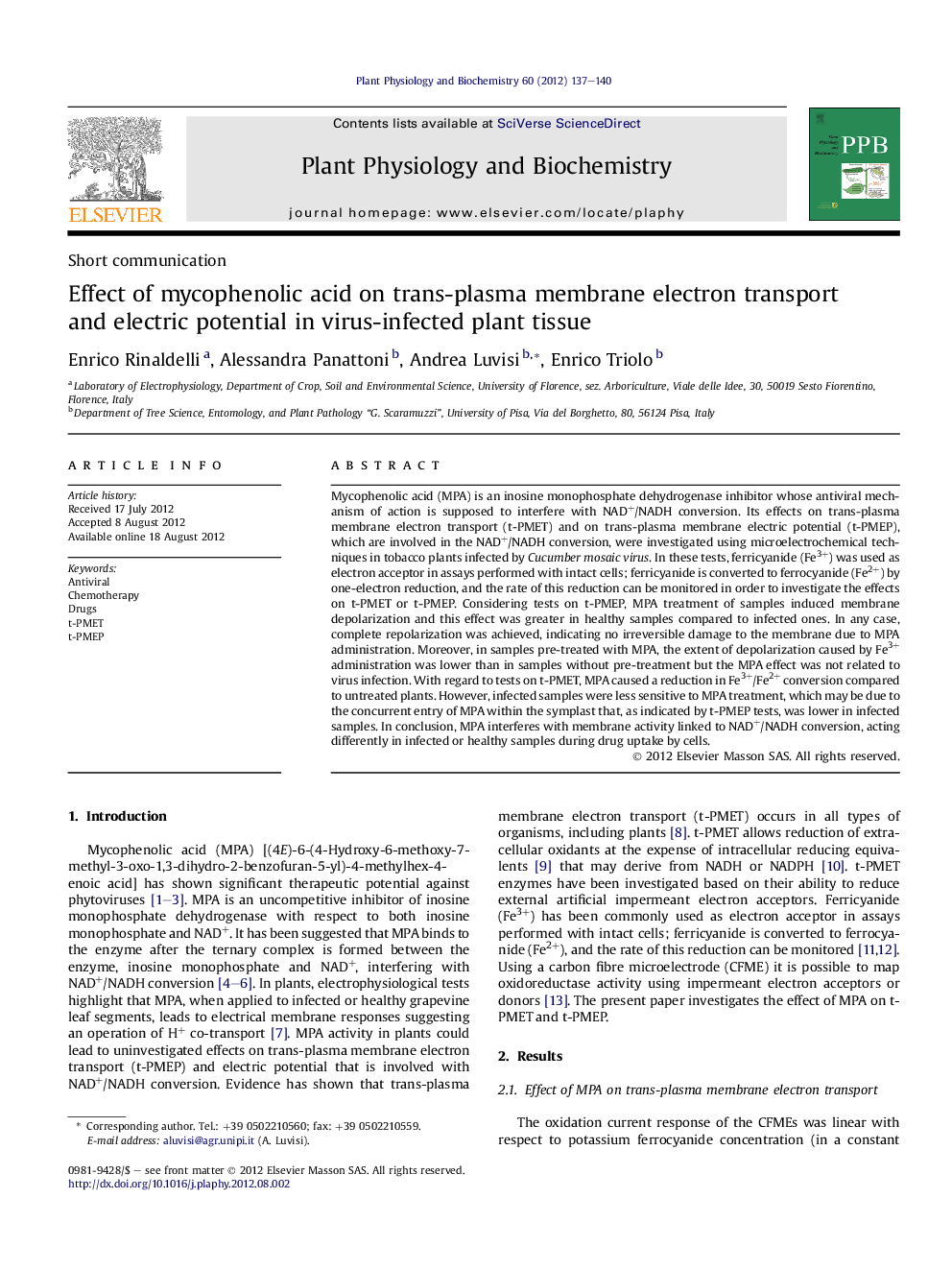| Article ID | Journal | Published Year | Pages | File Type |
|---|---|---|---|---|
| 2016136 | Plant Physiology and Biochemistry | 2012 | 4 Pages |
Mycophenolic acid (MPA) is an inosine monophosphate dehydrogenase inhibitor whose antiviral mechanism of action is supposed to interfere with NAD+/NADH conversion. Its effects on trans-plasma membrane electron transport (t-PMET) and on trans-plasma membrane electric potential (t-PMEP), which are involved in the NAD+/NADH conversion, were investigated using microelectrochemical techniques in tobacco plants infected by Cucumber mosaic virus. In these tests, ferricyanide (Fe3+) was used as electron acceptor in assays performed with intact cells; ferricyanide is converted to ferrocyanide (Fe2+) by one-electron reduction, and the rate of this reduction can be monitored in order to investigate the effects on t-PMET or t-PMEP. Considering tests on t-PMEP, MPA treatment of samples induced membrane depolarization and this effect was greater in healthy samples compared to infected ones. In any case, complete repolarization was achieved, indicating no irreversible damage to the membrane due to MPA administration. Moreover, in samples pre-treated with MPA, the extent of depolarization caused by Fe3+ administration was lower than in samples without pre-treatment but the MPA effect was not related to virus infection. With regard to tests on t-PMET, MPA caused a reduction in Fe3+/Fe2+ conversion compared to untreated plants. However, infected samples were less sensitive to MPA treatment, which may be due to the concurrent entry of MPA within the symplast that, as indicated by t-PMEP tests, was lower in infected samples. In conclusion, MPA interferes with membrane activity linked to NAD+/NADH conversion, acting differently in infected or healthy samples during drug uptake by cells.
► MPA treatment of plants induced membrane depolarization. ► MPA caused greater depolarization in healthy plants compared to infected ones. ► MPA caused a reduction in Fe3+/Fe2+ conversion compared to untreated plants. ► MPA interferes with membrane activity linked to NAD+/NADH conversion.
